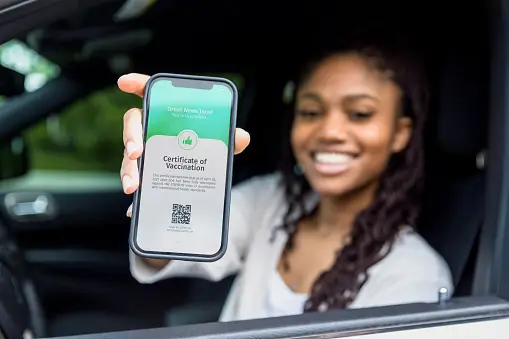For online businesses, verifying customers and ensuring compliance with regulations is essential. More people are working online, so companies should focus on online services. Verification protects minors from age-restricted content or activities. Many business sites contain “tick boxes for age checks, but this method is unreliable. So, sometimes teenage customers fake their age.
Online businesses must conduct age checks. When a business verifies age before giving access to customers, those under 18 can’t access age-restricted content or products. Businesses that apply age verification face several challenges to compliance with regulations, and in cases of non-compliance, businesses have to pay heavy fines.
What is Age verification?
Before allowing clients access to age-restricted goods or services, age verification is a process that confirms the customers’ ages. Age verification is used to protect minors from getting access to age-restricted content and comply with regulations. As online sales increase daily, age verification becomes crucial for e-commerce, gambling, and the sale of tobacco/alcohol. Businesses that ignore age verification laws unwittingly encourage teens to participate in activities that are only appropriate for adults. And if law enforcement agencies discover this, they can prohibit the website and apply heavy fines.
Cost Of Implementing Age Verification
Depending on the method, age verification might be expensive and challenging to implement. For example, age gating is less expensive and easier to apply, but it is unreliable. The other techniques, document verification and biometric authentication, are reliable but costly. Businesses need to prioritize online age verification because of customers’ safety and business reputation.
Methods For Age Verification
There are many methods for age verification, but businesses choose the method according to their business requirements. Each method has its pros and cons; businesses should carefully choose the method that meets regulatory requirements.
Age Gating
Age gating is a method to restrict underage customers from inappropriate content. This method is mostly used by online websites, e-commerce, gambling sites, etc. The method provides checkboxes to indicate their date of birth to verify the age of customers. This method looks simple and effective, but it depends on the user’s honesty.
Identity Document Verification
This method involves verifying the customer’s age by verifying government-issued documents like passports, licenses, and ID cards. The verification can be done either manually or with the help of artificial intelligence and machine learning. The manual process can be costly and time-consuming because it involves human involvement.
Age Estimation
Most people misunderstand both terms, age verification online and age estimation. But it has a different meaning. Age estimation is the process of estimating a person’s age based on physical features. Ituses advanced algorithms and machine learning to estimate someone’s age.
Benefits Of Age Verification
Age verification provides many benefits to businesses beyond compliance with regulation, like saving company reputation and improving the customer experience.
Improve Sales
Age verification offers several benefits beyond simply complying with regulations. It enhances security by restricting underage customers from age-restricted activities. In this manner, age verification eliminates the probability of identity theft and unauthorized access and improves brand reputation. It improves the overall customer experience, increasing business growth and sales.
Compliance With Regulations
Age verification allows businesses to comply with legal regulations to protect themselves from negative consequences and bad reputations. Legal authorities may award jail time or high penalties to companies that violate age verification regulations. Non-compliance with rules can ruin the brand name and cause negative consequences.
Improves Revenue Through Good Marketing Strategy
By collecting the age data through online age verification, businesses can understand their age group and interests. It helps companies with advertising and shows the type of content users want. This way, it improves marketing efforts by creating a good marketing strategy, and growing audience and revenue.
Some businesses hesitate to implement age verification because of its difficulty and cost. But the negative consequences of not applying age verification outweigh the potential cost. Many age verification methods can easily be used in existing systems without further changes. Through age verification and regulatory compliance, businesses may safeguard their brand, and boost client growth and sales.
To Wrap Things Up
Age verification is gaining importance daily, and regulators pay special attention to it. There are many methods for age verification, like age gating, which is easy to implement but can be bypassed easily. The other techniques, biometric verification and document verification, are reliable but costly. Document verification is challenging and time-consuming, but biometric verification is simple, secure, and time-saving. Age verification is important in businesses to verify the customer’s age before giving access to the products. It protects business reputations and improves company sales.
